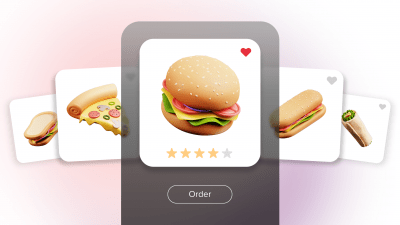Last Updated on: 24th May 2024, 09:45 pm
Video content grows from year to year. In 2021 the average viewer retains 95% of the message while watching it, as opposed to just 10% of the retention rate when reading it, 55% of consumers use movies to make purchasing decisions. What’s the future of video content and how to measure the effectiveness of video content?
In this article you will learn about:
- the future of video content
- benefits of video ads
- platforms to use video marketing
- measuring the effectiveness of video marketing
Table of Contents:
- Why does the future belong to video content?
- Benefits of video content
- A look at the use of video by social media
- How to measure the effectiveness of video content?
Why does the future belong to video content?
Video advertising for marketers is: attractive, versatile, and an extremely shareable medium to reach their audiences. For consumers, this proves to be convenient and efficient. They can have interesting content quickly and effortlessly. The future of digital advertising is definitely in video advertising. E.g. Instagram is consistently converting from photos to short films.
It all developed quickly in 2020. People are working and living online. Video became more crucial than ever for marketing and communication. And it is still developing.
According to the Wyzowl survey, every week people spend around 16 hours watching movies on the Internet in the US. This means an increase of 52% over the last two years. When asked how people would like to find out about a product or service, almost 66% said they would rather watch movies. This was in stark contrast to the 18% who preferred textual content. 84% of people said that they were persuaded to buy a product or service after watching a movie about the brand. Finally, video ads can help generate leads and increase sales. 83% of marketers said the videos helped them attract customers, and 80% of them said the videos helped them increase their sales.
Benefits of video content
Video is an important tool in the everyday work of marketers. It certainly helps to increase brand visibility and helps engage their audience. As a result, it is easier to build the trust of potential customers.
The number of people who have smartphones is 7.101 billion, which is 89.76% of the world’s population. Video ad forms work well for small electronic screens where users scroll until something attractive grabs their attention. However, it is more difficult for the eyes to process written text.
According to the Nielsen Norman Group, site visitors will only read 20% of the text on a page with an average of 593 words. Customers prefer to watch movies and the main reason is that they are easier and faster.
Short films allow viewers to significantly increase the awareness and credibility of the company. It often happens that the video ad will be immortalized in their memory. Films make a lasting impression because they stimulate the human senses.
Video advertising helps build trust and credibility. This is a great way to create a brand personality. 90% of users say product videos are helpful in the decision-making process.
Video content dominates online content
Video is still evolving and is replacing other tools. 96% of consumers increased their online video consumption in 2020. Additionally, 9 out of 10 viewers said they would like to see more videos from brands and companies. It is predicted that starting from 2022, the average person will spend 100 minutes a day watching video content online.
Let’s throw in a few more numbers: one billion hours of YouTube videos are watched daily, YouTube has 2 billion active users every month and over 30 million daily users, and there are 38 million active channels on YouTube, 15 million of which are content creators and 22,000 of them have over 1 million subscribers.
These are just a few statistics that show how powerful video is and how quickly it is leaving other media behind.
Video content engages users
Video marketing is known to spark more interest than any other content. There are several reasons for this.
Video is more engaging and memorable for informed users. There are many tips marketers use to get people to watch and remember videos:
- Focus on stories, not sales. The video ad must create some value for the viewer. The best content tells stories that connect with the viewer. The customer must feel that the story relates to them. They need to sense what the company/product can do for them.
- Upload an interesting thumbnail. On Facebook or YouTube, you can upload a thumbnail next to the video ad. This is a great way to grab your viewers’ attention and get them excited about your video before it even starts playing. Think of thumbnails as an important first impression. The thumbnail should show that the video is of high quality.
- Use the hook method. The company has to hook up at the beginning of the movie. The hook is a really quick preview of what will show up in the video.
- Put the best first. The average attention span is just 8.5 seconds. The video only has a few seconds to spark interest as people scroll through their channels and keep the viewer interested.
Video content – perfect for sharing
Why is video content perfect for sharing? Videos engage multiple senses and are easy and quick to process. The more engaged consumers are with video ads, the more likely they are to share it.
Instagram engagement report reveals video marketing is the best way to generate engagement, as we’ve seen:
- Video posts generated an average of 150 comments.
- Image posts generated an average of 65 comments.
- Carousel posts generate an average of 80 comments.
Sharing videos is very important to their popularity. New platforms, prepared especially for this, are continuously being created. A great example of a video app that is getting more and more uploads is TikTok. As a short video app, TikTok is growing at a tremendous pace. It has become the first non-Facebook mobile app to reach 3 billion downloads globally in 2021.
Video content improves sales
In first order, video ads help to show products. Videos are so much better in showing products than photos. According to video marketing research, 96% of buyers find video ads helpful when making an online purchase decision. Secondly, videos make it easy to buy. Interactive videos allow you to place clickable links that can lead customers directly to the checkout page on your website. Thirdly, there are some SEO benefits. Video marketing can also indirectly help increase sales by improving search engine rankings.
Placing a video on site can extend the time a visitor spends on your site. According to a Wistia study, the average time spent on non-video sites is just 2 minutes and 48 seconds, but the average time spent on video pages is an amazing 7 minutes and 21 seconds.
See also: The Market Is Changing And Advertisers Must Adapt Novel Technologies To Thrive
A look at the use of video by social media
There are plenty of social media apps, which allow users to upload, store, and deliver video ads, and leverage it for marketing purposes. The most popular are Facebook, LinkedIn, or Instagram.
What is interesting, on average, LinkedIn users spend roughly 3x more time watching video ads compared to static sponsored content. Video ads earn 30% more comments per impression than non-video ads. This also seems to be a great place for video ads.
And last, but not least – Facebook. 15% of all Facebook content is video. In 2020, most of this video content (71%) was published by Pages with over 100k fan. Impressive, isn’t it?
How to measure the effectiveness of video content?
The effectiveness of video marketing can be measured by measuring engagement. It is usually measured or monitored based on actions taken by the audience while using the content. For example, through comments or likes from users. The user likes the video or leaves a comment on the topic, which would indicate commitment.
There are a few metrics you can use to track your videos’ performance to measure engagement:
- View counts – this shows how many times a video is played.
- Video Completion Rate – this shows the percentage of times a video is watched to the very end.
- Cost per Completed View – this stands for the advertising cost divided by the total number of videos viewed to completion.
- Social shares – measure social media performance.
This popular data is the best and easiest way to get a basic idea of how a video is doing.
The future belongs to video marketing. No question. Jump on the video bandwagon (unless you have already done it) and make your brand remembered.
If you have any questions, comments or issues, or you’re interested in meeting with us, please get in touch.





